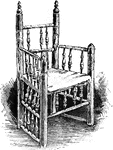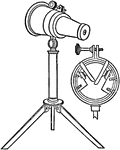Clipart tagged: ‘Brewster’

Brewster's Chair
Elder Brewster's Chair. William Brewster was one a pilgrim who rode the Mayflower in 1620.

Elder Brewster's Chest and Dinner-pot
Elder Brewster's chest and dinner-pot. William Brewster was one a pilgrim who rode the Mayflower in…
Convex Lens
"A modification of the simple kaleidoscope was introduced by Sir David Brewster, whereby the images…

Polyangular Kaleidoscope
"Another form is called the polyangular kaleidoscope. The only essential difference in it is that the…